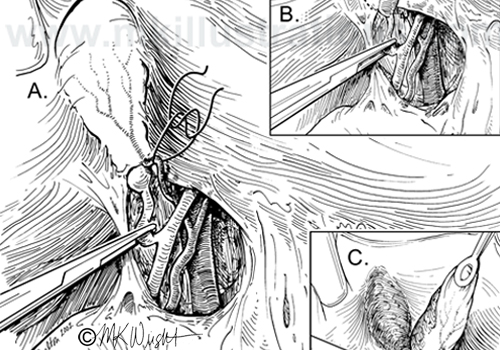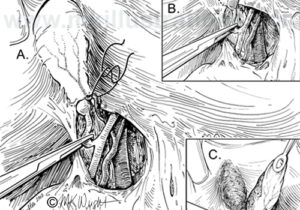Not too long ago I attended a conference where a surgeon spoke to a room full of medical illustrators about a very complex and risky procedure involving the separation of conjoined twin girls. It was complicated due to their shared anatomy – their hearts were overlapped, their pancreases were fused, their intestines were entangled, and their livers and supplying vasculature was joined. As the surgeon spoke of the dangers of the procedure, he held us all enraptured waiting to hear what would happen next. But he stopped for a moment and then said, “I am here to tell you all, that a medical illustration saved these girls’ lives.”
After this bold pronouncement, he went on to explain how they had used every resource available to them to get images of the anatomy – CAT scans, MRI’s, x-rays – they had used it all. While it was all very useful, they were still having trouble wrapping their minds around the complexities of the anatomy and where they would need to make the cut to separate the girls. At this point a staff medical illustrator working closely with the head surgeon created a series of illustrations depicting the anatomy where the separation cut would be. It was like flipping on a switch for the medical team when they looked at the illustrations, especially those clearly illustrating the shared blood supply of the liver. They understood what they would need to do and were ready to move forward. Needless to say the surgery was successful and the parents had two healthy baby girls to take home.
As a medical illustrator, I have often been asked, “Why can’t you just use a photograph? Why use medical illustration?” Medical illustration can often portray what a photograph (or as seen in the story above, an MRI or x-ray) cannot. A photograph can be taken of a surgical field but a medical illustrator is able to show the same surgical field with anatomy that may have been obscured by blood or the surgeon’s hands, or even show the surgical field from a different angle. In this way the illustration becomes much more didactic and useful than the photograph.
One characteristic that makes medical illustrators unique from other artists is our specialized medical training. A medical illustrator who has gone through one of the few masters programs offered in the field, have completed two and a half years of medical and science courses, making our education a tool constantly put to use in the profession. Creativity and imagination is also a critical trait, as we are often asked to draw what can’t be seen or to visualize anatomy from a new angle.
A medical illustrator can help you in many ways. Because of our unique skills, medical illustration is a valuable tool that your company or practice can utilize to communicate complex medical concepts not only to your patients, but your staff and peers as well. Patient education information can be strengthened by clear and concise medical illustrations often increasing patient compliance. Surgical procedures can be explained easier with medical illustrations to aide doctor-patient discussions. Medical illustrators can clearly depict a prototype of a medical device or product, helping in securing investors. We can draw what can’t be seen, such as intricate sub-cellular pathways too tiny to be seen with a microscope.
So, to the question, “Why use medical illustration?” I say, “Why wouldn’t you?”



